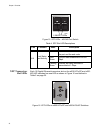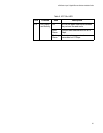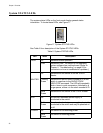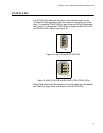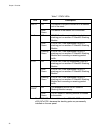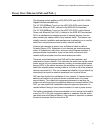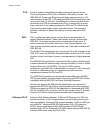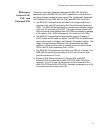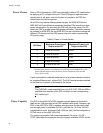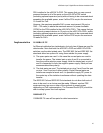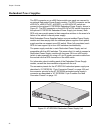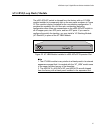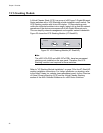Chapter 1: Overview
42
PoE Power is injected on the Ethernet cabling along with data by Power
Sourcing Equipment (PSE), like an Ethernet LAN switch or router. The
IEEE 802.3af, Power over Ethernet specification can provide up to 15.4
watts of power at the PSE. A PD under the IEEE 802.3af specification can
use no more than 12.95 watts. The difference in maximum power levels
provided by the PSE and available at the PD is in accounting for worst
case power loss in the cabling between the PSE and PD, which can be
influenced by cable length, quality, and other factors. This amount of
wattage is sufficient to power the majority of current generation PoE
Devices.
PoE+ PoE+ supplies the higher power required from a new generation of
network attached devices. These new devices, such as, multiple radio
IEEE 802.11n wireless access points, powered pan tilt and zoom IP
security cameras, thin clients, door locks, touch screen displays, and
video phones frequently require more than the 12.95 watts available with
IEEE 802.3af.
The IEEE 802.3at specification can provide up to 30 watts of power at the
PSE. A PD under the IEEE 802.3at specification can draw up to 25.5 watts
of power, which is sufficient to power a new generation of higher powered
PDs.
The IEEE 802.3at specification requires that PDs support a flexible Layer
2 power classification method using Link Layer Discovery Protocol - Media
Endpoint Discovery (LLDP-MED). The use of LLDP for power
classification provides PoE+ power allocation in steps of 1 watt, along with
an ability to reallocate power, for improved power allocation and
management between the PSE and PD.
The IEEE 802.3at specification is backwards compatible with the IEEE
802.3af specification. Powered Devices complying with IEEE 802.3af are
compatible with the IEEE 802.3at Power Sourcing Equipment.
Devices that support the IEEE 802.3at specification are optimized to
operate with IEEE 802.3at PSE to support dynamic power management.
PSEs that support the IEEE 802.3af specification interoperate with IEEE
802.3at compliant PDs, as long as the PD can operate using 12.95 watts
of power (but without dynamic power allocation and management).
Enhanced PoE Enhanced PoE delivers between 15.4W and 20W per port for PDs that
require more than 15.4W, for applications such as building security and
video surveillance. Enhanced PoE supplies between 15.4W and 20W per
port at 48VDC. Note that IEEE 802.3at standard PoE+ PDs requiring
56VDC cannot use Enhanced PoE PSEs instead of IEEE 802.3at
standard PoE+ PSEs. Enhanced PoE PSEs cannot replace IEEE 802.3at
standard PSEs when using any PoE+ PDs.



